Tech Tent: What future for humanoid robots?
- Published
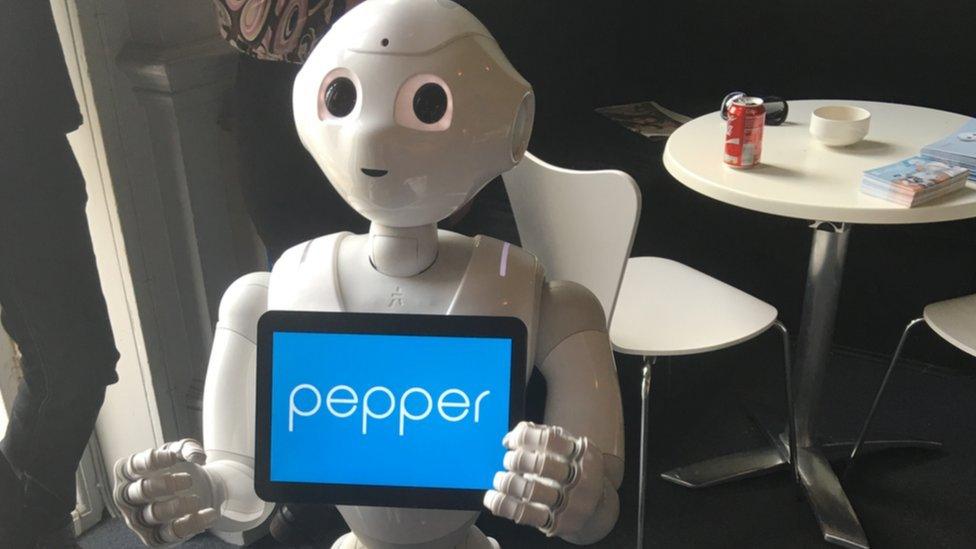
Pepper won the cute vote but how useful was it really?
It's the humanoid robot which has been the star of the tech circuit - but now Pepper's owners have paused production. On this week's Tech Tent, we explore whether we are falling out of love with robots that look like us.
It is not surprising that Pepper, with its cute face and pleasant voice, became a star. The robot, created by the French company Aldebaran, which became the robotics division of Japan's SoftBank in 2012, seemed to be everywhere.
I met it (there was always a temptation to call Pepper "her") at CES in Las Vegas, at the Innorobo show in Paris and at the Cheltenham Science Festival where we shared the stage in a discussion about artificial intelligence,
Pepper even appeared in front of a House of Commons select committee to "give evidence" about the impact of AI on education. And it was this rather embarrassing event that summed up the growing unease many felt about the robot. Pepper had been programmed to make a simple statement rather than answer MPs' questions, demonstrating the limits of its robotic intelligence.

This week SoftBank confirmed to the BBC that it has "paused" the production of new Peppers, which had been marketed as everything from museum guides, to office receptionists and cheerleaders at sports events. The Japanese company which, according to Reuters, has laid off half the staff at its French robotics division, would only say that production would resume when it was needed.
Kerstin Dautenhahn, professor of intelligent robotics at Canada's University of Waterloo, tells Tech Tent that she has worked with Pepper and quite likes it: "It's a very social robot, it can speak, it can dance, it can do certain tricks."
But she has serious questions about its purpose: "The use of that robot is quite limited because other than dancing and looking impressive, what can it actually do? "
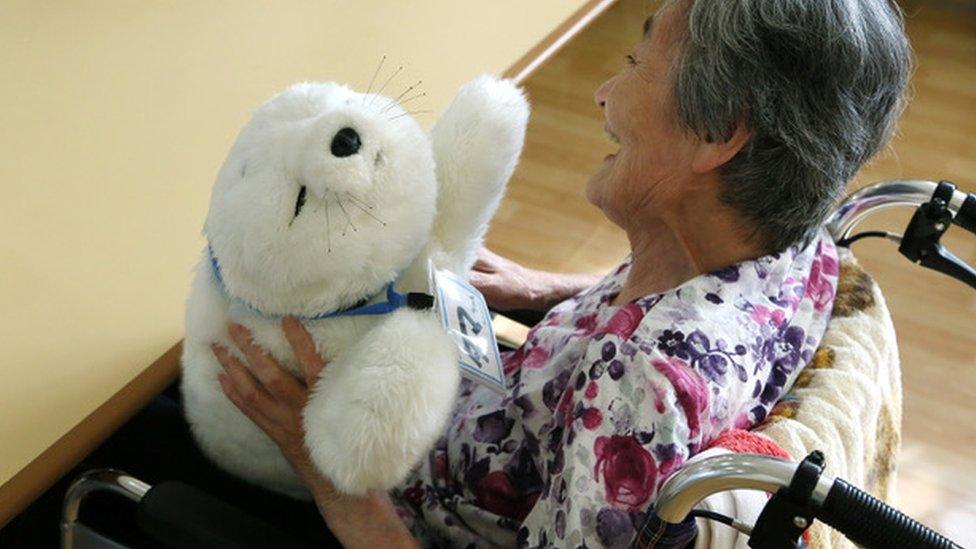
The friendly seal robot Paro has found a role in care homes and won fans
Other humanoid robots have wowed the crowds over recent years, only to fade away.
Jibo was marketed as the first social robot for the home and was one of Time Magazine's innovations of the year in 2017. But one reviewer described it as "creepy and annoying" and when the company that made it was bought, the new owners made it clear they did not see a long-term future for Jibo.
Cozmo, the tiny robot toy truck with a smiley face, was described as the "cutest, most expressive machine of its kind that ever lived". But its creators Anki went out of business, with customers unwilling to pay a hefty price for an AI toy.
But prof Dautenhahn points to one successful social robot, the Paro, which looks like a toy seal but is quite a sophisticated device that has been used in care homes and hospitals.
She says the designers had the bright idea not to make the therapeutic robot speak or seem to have human intelligence. "They found a very particular niche," she says. "It was tactile interaction, comforting, tactile interaction."
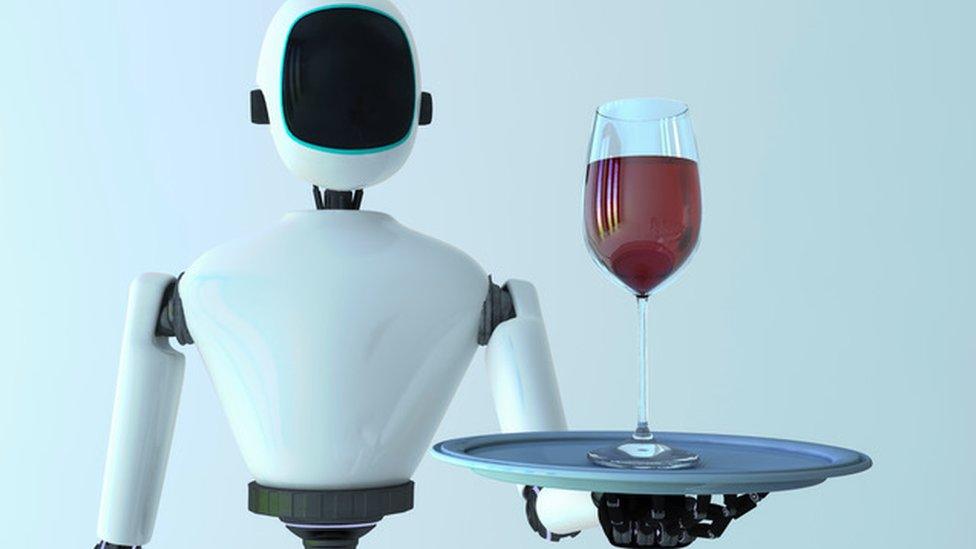
The dream for many is a robot that will serve us drinks
Still, we seem to hang on to that sci-fi vision of robot butlers which can do everything around the home while holding an intelligent conversation with us.
Kerstin Dautenhahn says she and other researchers are still working on social robots that can do a variety of tasks: "It is just really, really hard."
She says we will need to accept robots that "cannot dance well and sing well but can actually do certain things that might be useful for people".
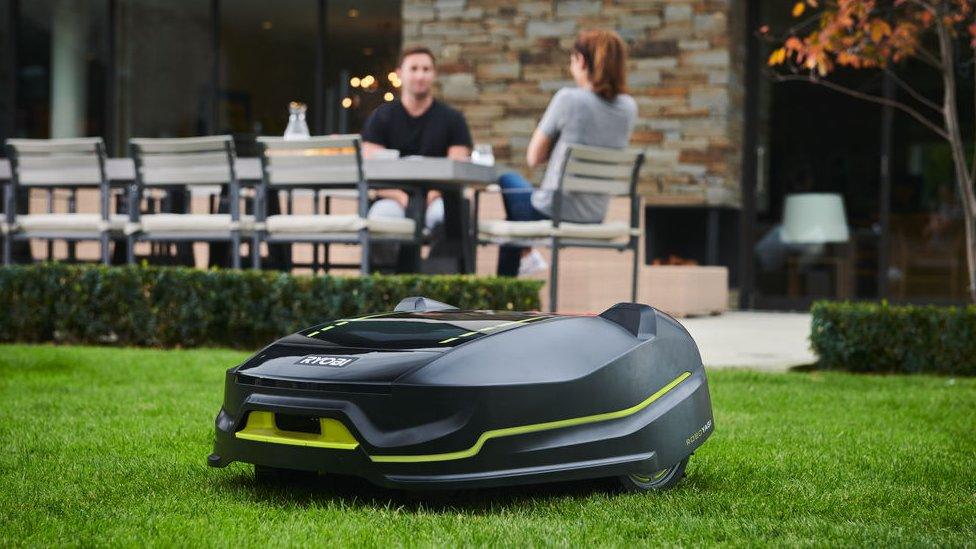
Some of the most useful robots, like the ones that mow our lawns, do not need to look human
In fact, some of those useful things are already being done by machines, A smart speaker can tell you what the news is or read out a recipe, we have robot vacuum cleaners and lawnmowers, and for decades we have had machines that wash our dishes or clothes, even though we don't call them robots.
Perhaps we need to accept that a smiley face and a soothing voice are not essential features of our robot helpers.
Related topics
- Published29 June 2021
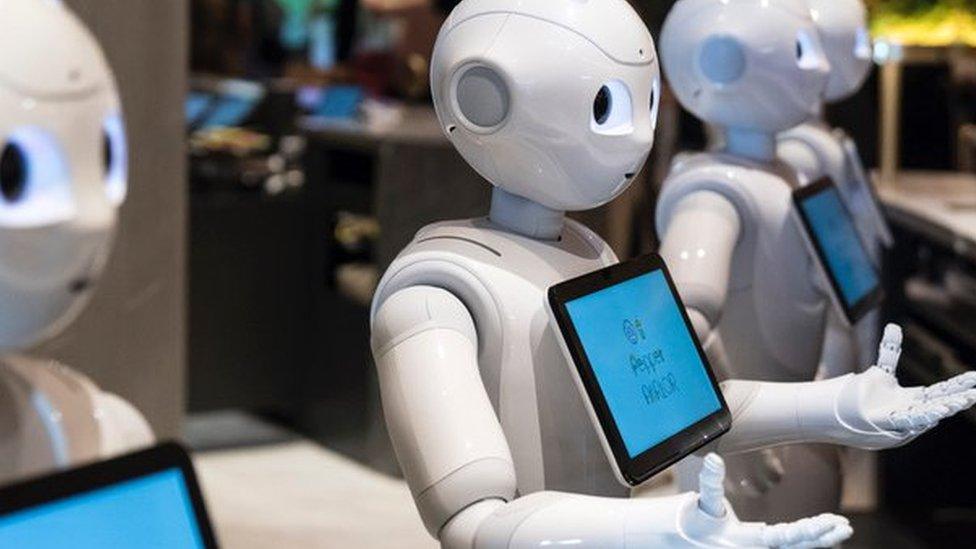
- Published24 July 2020
